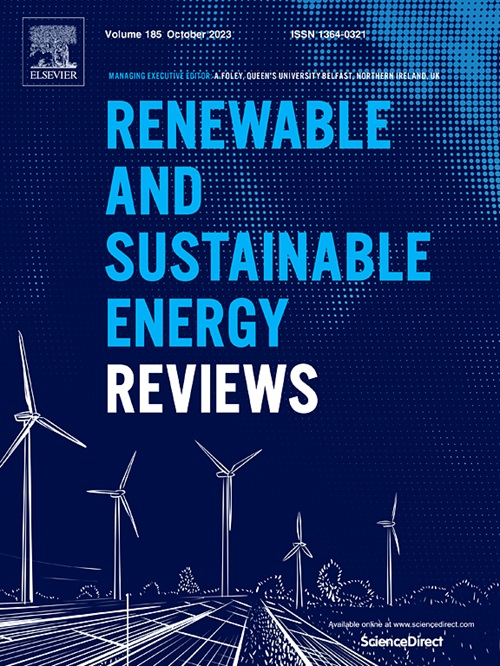通过水热碳化为污泥衍生水相提供可持续发展的机会
IF 16.3
1区 工程技术
Q1 ENERGY & FUELS
引用次数: 0
摘要
水热碳化(HTC)最大限度地减少污泥的体积和环境危害,同时产生有用的产品。然而,该技术产生的大量有毒htc -水相(HTC-AP)往往被忽视,这对其发展构成了重大障碍。本文综述了与污泥源HTC-AP相关的特性、转化机制、处理和回收技术。此外,建议利用机器学习来预测HTC-AP的性能。HTC- ap的特性与污泥的化学性质和HTC工艺参数密切相关,高氮污泥比例越高,温度越高,毒性越高。在回收HTC-AP之前,解毒是必不可少的。在单一工艺中实现HTC-AP的全面处理和回收是具有挑战性的,需要系统之间更大的集成和协同作用。上游污泥HTC工艺与下游HTC- ap增值策略之间的紧密联系对于确保工艺可持续性至关重要。此外,本文提出了一种新的策略,该策略将机器学习方法与使用系统思维的多过程集成相结合,以提高能源产量和经济性能,并优化HTC过程。这篇全面的综述为优化污泥源HTC- ap回收和HTC工艺法规提供了指导,目的是提高HTC污泥管理的可持续性。本文章由计算机程序翻译,如有差异,请以英文原文为准。

Unlocking sustainable opportunities for sludge-derived aqueous phase via hydrothermal carbonization
Hydrothermal carbonization (HTC) minimises the volume and environmental hazards of sludge while generating useful products. However, the substantial volumes of toxic HTC-aqueous phase (HTC-AP) generated by this technology are often overlooked, posing a significant barrier to its advancement. This review thoroughly examines the characteristics, transformation mechanisms, treatment, and recycling technologies associated with sludge-derived HTC-AP. Additionally, it suggests utilizing machine learning to forecast the properties of HTC-AP. The characteristics of HTC-AP are closely linked to the chemical properties of the sludge and parameters of the HTC process, with higher proportions of high-nitrogen sludge and higher temperatures correlating with increased toxicity. Detoxification is essential before HTC-AP recycling. Achieving the full treatment and recycling of HTC-AP in a single process is challenging and necessitates greater integration and synergy between systems. A strong connection between the upstream sludge HTC process and downstream HTC-AP value-added strategy is vital for ensuring process sustainability. Furthermore, this review proposes a novel strategy that combines a machine learning approach with multi-process integration using systems thinking to enhance the energy yield and economic performance and optimize the HTC process. This comprehensive review provides guidance for optimizing sludge-derived HTC-AP recycling and HTC process regulations, with the goal of increasing the sustainability of HTC for sludge management.
求助全文
通过发布文献求助,成功后即可免费获取论文全文。
去求助
来源期刊

Renewable and Sustainable Energy Reviews
工程技术-能源与燃料
CiteScore
31.20
自引率
5.70%
发文量
1055
审稿时长
62 days
期刊介绍:
The mission of Renewable and Sustainable Energy Reviews is to disseminate the most compelling and pertinent critical insights in renewable and sustainable energy, fostering collaboration among the research community, private sector, and policy and decision makers. The journal aims to exchange challenges, solutions, innovative concepts, and technologies, contributing to sustainable development, the transition to a low-carbon future, and the attainment of emissions targets outlined by the United Nations Framework Convention on Climate Change.
Renewable and Sustainable Energy Reviews publishes a diverse range of content, including review papers, original research, case studies, and analyses of new technologies, all featuring a substantial review component such as critique, comparison, or analysis. Introducing a distinctive paper type, Expert Insights, the journal presents commissioned mini-reviews authored by field leaders, addressing topics of significant interest. Case studies undergo consideration only if they showcase the work's applicability to other regions or contribute valuable insights to the broader field of renewable and sustainable energy. Notably, a bibliographic or literature review lacking critical analysis is deemed unsuitable for publication.
 求助内容:
求助内容: 应助结果提醒方式:
应助结果提醒方式:


